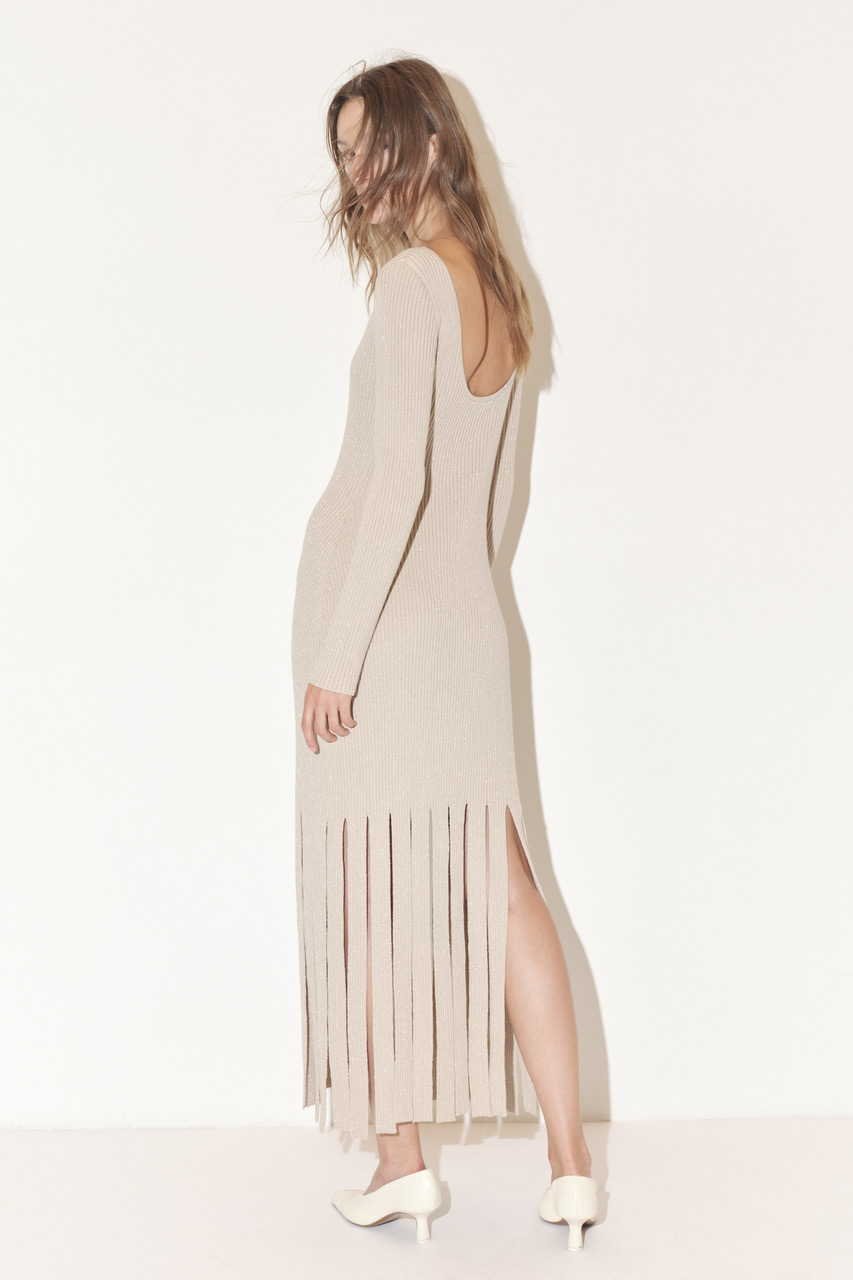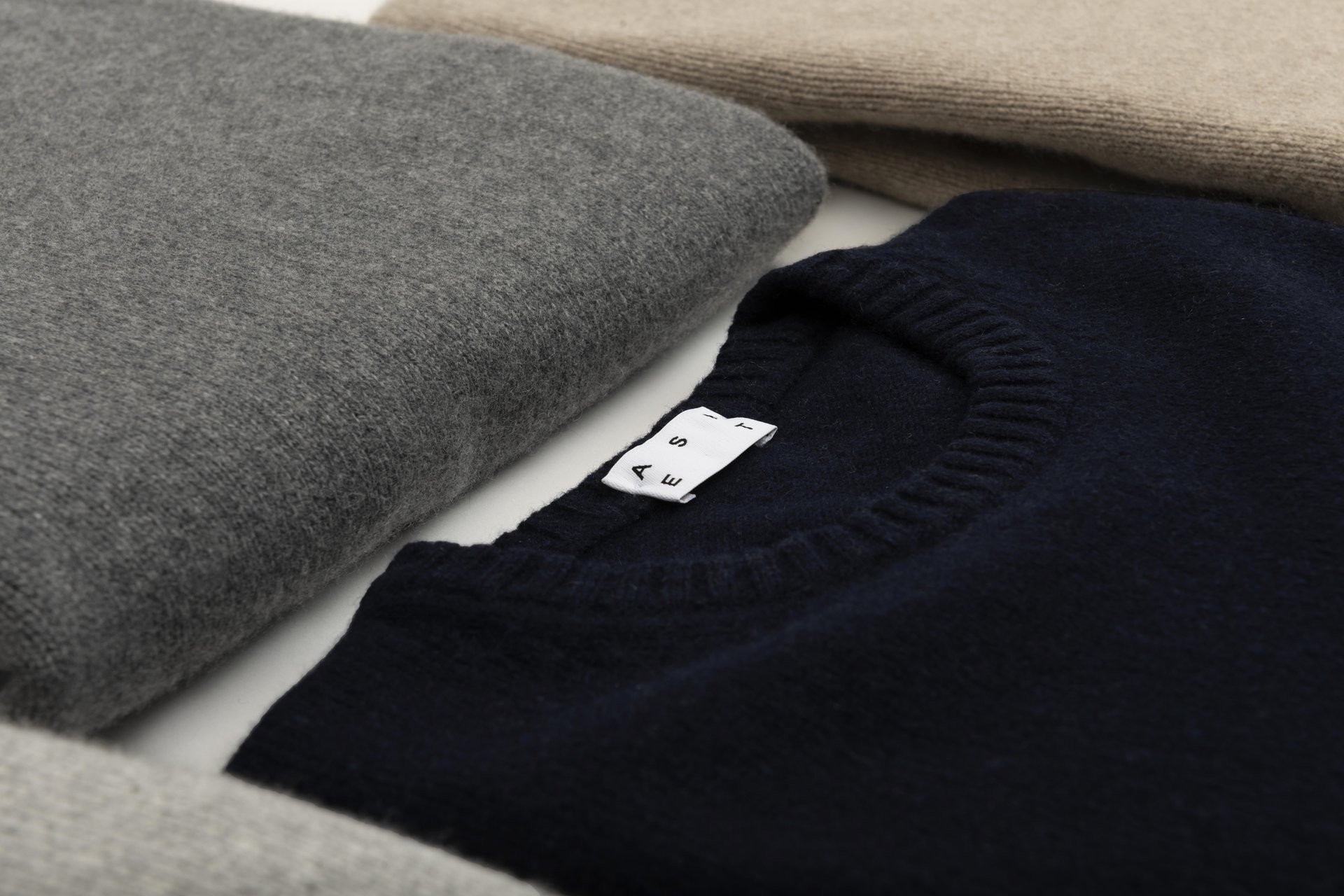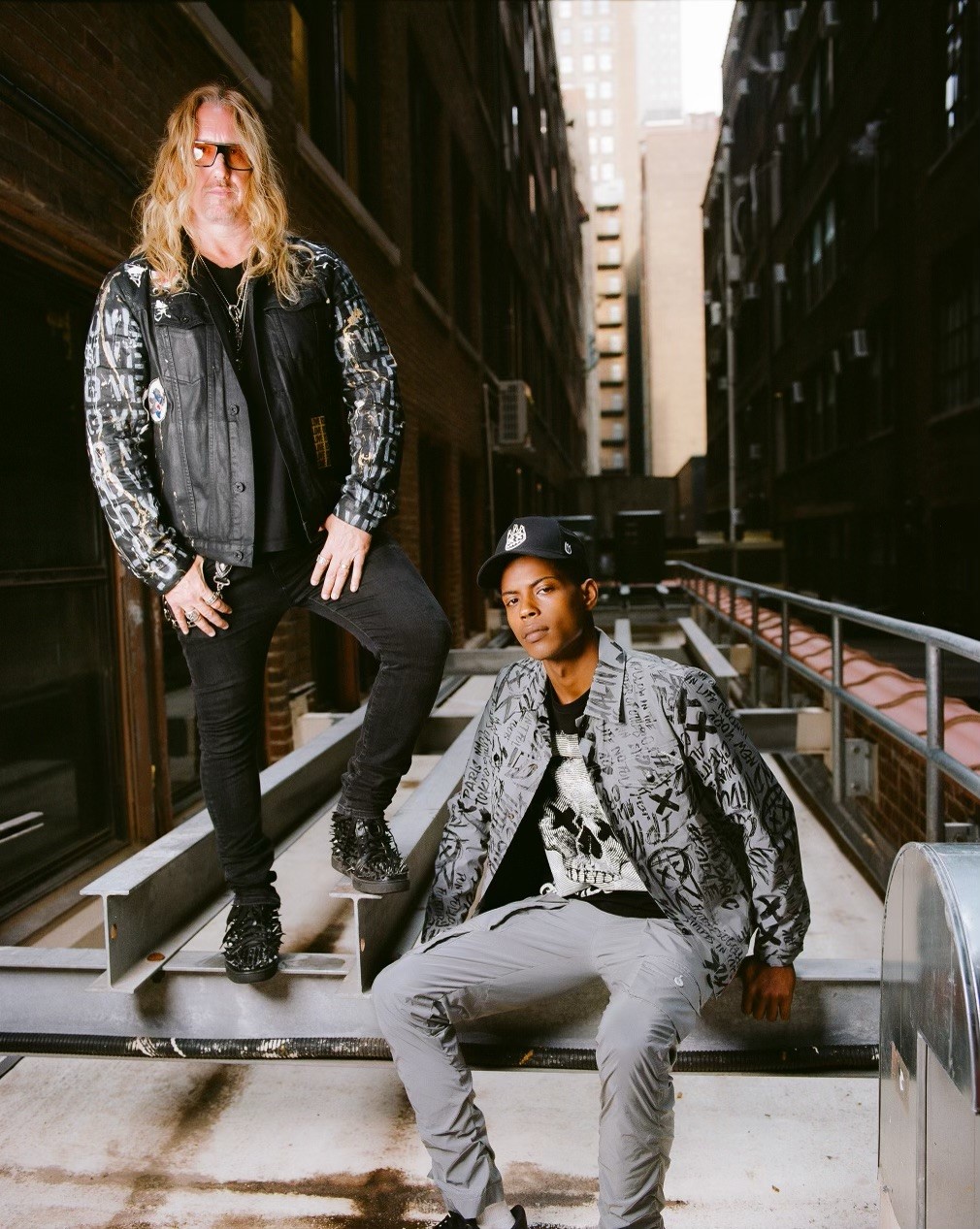Sustainable in Sweden: Four Designers with an Eco-Positive Impact
September 29, 2021
Roxanne Robinson

Sustainability isn’t just a trend in Sweden. It’s a way of life. Designers there have led the eco-conscious movement before Greta Thunberg rang the climate change warning bell. According to Caterina Midby, the Secretary General of the Swedish Fashion Association, respecting the environment is in the culture. “We live close to nature here and from a young age, the ‘freedom to roam’ concept is instilled in us. It means that nature belongs to all of us, and we are responsible to preserve,” she explained of the mindset. “Additionally, companies are willing to invest in sustainability, it’s not an added value but rather the norm.”
Mostly, it’s driven by the private sector as the government neither imposes nor supports fashion initiatives. In lieu of this, brands turn to outside organizations. “Brands must invest and work on this individually and as an industry with global organizations like the Sustainable Apparel Coalition or the Textile Exchange for their sustainability agendas,” added Midby, who is practically solely responsible for Stockholm Fashion Week as it positions itself as the sustainable fashion week with an equal focus on fashion and sustainability. The most recent installment—which wrapped on Sept.2—included House of Dagmar, Filippa K, ASKET and ATP Atelier. We spoke with these Swedish brands on the best ways to incorporate sustainability naturally.

House of Dagmar
HOUSE OF DAGMAR
About: Founded in 2005 by three sisters Karin Söderlind (CEO) Sofia Wallenstam (Brand Director) and Kristina Tjäder (Co-founder and Board Member) as ”high-quality fashion brand with low-impact products” selling women’s ready-to-wear and knit separates. Their grandmother Dagmar was a seamstress, hence the namesake. To House of Dagmar, sustainability means products with longevity, with the least environmental footprint possible. The brand was awarded the Zalando Sustainability Award during Copenhagen Fashion Week 2021.
Retail: The brand is sold at their flagship concept store, NK, and Alens City multi-brand stores in Stockholm, as well as Le Bon Marchè and Galeries Lafayette in Paris, where it sits with Totême, Acne, Ganni, and Isabel Marant, among others.
Approach: Sustainability was always a core value. “When we established the brand, no one used the word sustainability. We were tired of fast fashion and decided to create sustainable and contemporary designs that would last for many years,” Söderlind said.
Moment: In 2016, they recognized the climate crisis and fashion’s role in it and amped up efforts to become carbon neutral. “In 2017, we started measuring our fiber footprint through an EU project with STICA (Swedish Textile Initiative for Climate Action) and Anthesis Group. We discovered how to continue our work to reach an even lower impact on the environment,” Söderlind noted.
Daily Practices: House of Dagmar exclusively uses GOTS-certified (Global Organic Textile Standard) organic cotton, and certified viscose such as Lenzing™ Ecovero™ made from certified renewable wood sources that generate 50 percent lower CO2 emissions and water use. These fibers meet Forest Stewardship Council (FSC) standards which monitors responsible forest management, and the Global Recycle Standard (GRS) which sets environmental and chemical use requirements for the recycling process. Additionally, House of Dagmar uses regenerated wool that reduces carbon dioxide in its production.
Support Systems: Like many Swedish brands, House of Dagmar partners with STICA and Anthesis Group, an international organization that ‘supports clients to sustainably eliminate CO2 transmissions to Net Zero.’
Financial Considerations: Working with certified materials is more expensive due to the process of making fibers in a new and better way. A good example is organic cotton which is in high demand but so far more expensive to produce.
Tips: Söderlind recommends measuring material and fiber footprints, then learning what changes make an impact. Start there but don’t ty to change everything at once. Make garments made to last at least 100 wearings. Inspire and educate consumers to make conscious purchases. Together, these things can contribute to decreasing carbon dioxide emissions.
“A common misconception with recycled materials is that it is inferior to virgin material. Even though the lengths of the fibers are shorter, we always use materials that are mixed in with virgin fibers to ensure that the quality and longevity are never compromised” – Karin Söderlind

Asket
ASKET
About: Asket, Swedish for ascetic which means the practice of abstaining from indulgence, was launched in May 2015 by Jacob Dworsky and August Bard-Bringéus. The men’s and women’s casual wear collection aims to do away with seasonal collections in favor of a single permanent collection designed to last a lifetime.
Retail: Asket is a direct-to-consumer model that aligns itself with such brands as as Allbirds, Patagonia, and Houdini via shared values.
Approach: The brand was established to combat the overproduction/overconsumption cycle. By rejecting the traditional high volume/high frequency output model most fashion brands engage in, Asket rejects the traditional model that results in overstock and waste at the end of the selling season.
Key Points: Asket challenged the non-stop delivery cycles proposing that slow fashion can be as big as fast fashion via less production. The brand holds itself accountable with three core pillars: mindfully produced and fair price zero-compromised garments, radically transparency of garments that traces its total lifecycle from market, and end by stressing proper care and a take-back program to avoid landfill.
Daily Practices: Asket tackles excess product with a timeless, made-to-last design philosophy. It disengaged in discounting and promotions, shifted focus to transparency of the garment’s every step, and reconsidered e-comm distribution by eliminating plastic, reducing shipping boxes, uses recycled materials. The latter was a study determining the reduction of CO2 emissions by 47 percent. The brand offers employees climate leave allowing five extra vacation days to accommodate train travel. The offices and store use 100 percent renewable energy and serve vegetarian food at company events.
Support Systems: Most the practices have evolved through investigation, trail and error, and collaborating with brands on similar missions such as Allbirds. Asket received guidance from Circle Economy’s Switching Gear—which helps businesses explore circular models—to facilitate the takeback program and work closely with mills to drive better practices.
Financial Considerations: To move towards 100 percent traceability in Asket’s Merino wool supply chain, the brand purchased wool directly from an Australian farm, investing 20 percent of the previous year’s revenue to obtain over 4 tons of wool. The amount was needed for an Italian spinner to set up a dedicated production line, from raw wool to finished yarn. Asket’s Revival takeback program required initial investment which will break even in three years. Despite these challenges, after six years, the company turned a profit in 2020 using little external funding.
Tips: Bard-Bringéus advised challenging the traditional fashion system. “We’ve already proven that you don’t need to be beholden to masses of inventory, with seasonal markdowns and actively encourage others to slow down,” the co-founder said. “Launching a conscious collection is meaningless if you’re not changing your existing practices. Be transparent in your communication as way to help customers make informed and sound purchasing decisions.”
“Today we buy 60 percent more clothing than we did 15 years ago and keep those garments half as long. This behavior is symptomatic of the fashion industry fostering a disposable clothes lifestyle, rather than an investment. You won’t find the world sustainable on our website. Rather we focus on understanding that everything a company produces and every purchasing decision a consumer makes has an impact on the planet and people. The sooner we acknowledge our impact, we’ll realize that we can’t shop our way to sustainability.” — August Bard-Bringéus

Filippa K
Filippa K
FILIPPA K
About: Filippa K was founded in 1993 by designer Filippa Knutsson and then-husband Patrik Kihlborg, pioneering modern Scandinavian style of smart sportswear and athleisure with ample outerwear. Today, the company is led by CEO Rikard Frost. Through expert craftsmanship and attention to detail, Filippa K hopes to ”drive mindful consumption movement and leave the world a better place than when it was found.”
Retail: The brand has freestanding stores in Stockholm, Copenhagen, Brussels, Oslo, Berlin, and other European cities. Retailers include Farfetch, Frenchtrotters, and Gravity Pope.
Approach: Filippa K always created pieces to last in terms of quality and style, realizing that longevity is key to sustainability. In 2014, a circular framework was implemented focusing on reducing, repairing, reusing, and recycling to prolong garments lifecycle. The brand develops existing practices and starts new initiatives to further the sustainability commitment.
Moments: In 2008, Filippa K opened its first resale shop in Stockholm. Four years later, it published its first annual sustainability report to include a 2030 sustainability commitment. In 2015, fillippa-k.com began listing the garment workers on each product. “While these are now commonplace practices for many fashion brands, we were among first to begin using them,” Frost said. “We’ve always strived to be transparent and honest, holding ourselves accountable so that consumers can do the same.”
Daily Practices: Frost works to reduce the carbon footprint in every area of the business. Key examples are the Filippa K fiber tool established in 2012 to inform environmentally-friendly fabric choices. As of 2020, 67 percent of styles were made from sustainable fibers. Since 2015, Filippa K collects worn merchandise from consumers, then upcycles it in the FK Studio. These are revamped for the Filippa K preowned marketplace launching in September, and participate in the clothing rental market. Recently, the brand received a grant from the Swedish government to lead a program studying time and costs associated with remaking the clothes to understand how to scale this work. It also works in partnership with blockchain-powered company Trustrace to help us trace the origin of our products back to the raw material. Ten products from the Spring 2022 collection will be scored for carbon, water, and land use impacts. Another initiative involves surveying suppliers on the status of their carbon reducing impact.
Support Systems: Filippa K looks to like-minded companies as a resource to share supply chain information and collaborating on product development such as a recent Swedish Wool Initiative. Companies such as MadeBy and Nike helped influence the Fiber Tool. Technologies such as Trustrace has helped engage other brands in workshops to examine traceability in the supply chain.
Financial Considerations: Frost acknowledges the hurdles regarding cost and order quantities for a mid-size brand to procure sustainable materials. “It’s challenging because we have to commit to much higher quantities if we want to use organic cotton, say, than if we were to use conventional cotton,” he said.
TIPS: “To become more sustainable, be focused and don’t try to do everything,” Frost advised, stressing the need to question why, what, and how you produce and to take responsibility for it after you put it out in the world.
“Policy support could be the solution by helping to subsidize more sustainable materials, rewarding stakeholders working with them and making them more readily available in the supply chain. Similarly, taxing less sustainable materials (like virgin polyester) would also help to even the playing field and make more sustainable materials accessible for all brands to use” – Rikard Frost of Filippa K
ATP Atelier
ATP Atelier
ATP Atelier
ATP Atelier
ATP ATELIER
About: ATP Atelier (which stands for All Tomorrow’s Parties) is a shoe and bag collection founded in 2011 by Jonas Clason and Maj-La Pizzelli, creative director and CEO. ATP Atelier couples contemporary Scandinavian design and authentic Italian craftsmanship. “The brand’s mission is to challenge the concept of luxury making it smart, not redundant,” said Pizzelli.
Retail: ATP Atelier has a flagship store in Stockholm along with wholesale partners such as Net-A-Porter, Browns, Harrods, Illum, Le Bon Marche, La Rinascente and The Webster.
Approach: “Sustainability has been our ‘why?,’ or reason to be since day one. When founding ATP Atelier, I had no interest in putting yet another brand on the market just because. After working at Filippa K for so many years, initiating their work with sustainability, I realized there was no one focusing on high quality leather goods from that same standpoint,” Pizzelli said.
Moment: The first shoe was made from vegetable-tanned vacchetta in 2011. Today, most ATP Atelier pieces (85 percent) are made from that same material as it’s the backbone of every collection.
Daily Practices: Currently, ATP is in the process of calculating CO2 emissions to understand how much is needed reduce its footprint. The brand was founded on the principles of sustainable production and designed to avoid overproduction. There are, for example, no minimum quantities. Stock is replenished in-season and turnover is streamlined via short lead times with the supplier. The design approach to use the same lasts and shapes focus on longevity. “Many styles, like the Rosa sandal, have been with us since the founding and others have evolved from Rosa’s classic shape,” noted Pizzelli. ATP Atelier uses vegetable tanning and closed loop water processes that also affect pollution and waste in a positive way.
Support Systems: The accessories label works with international partner Positive Luxury, which both questions and helps push sustainability initiatives forward. “We’ve been awarded the Butterfly Mark, which is a luxury industry-leading certification that highlights brands, suppliers and retailers committed to having a positive impact on nature and society,” she said.
Financial Considerations: ATP Atelier invests in expert help from partners such as Smart Luxury to ensure it operates in line with international sustainability standards and best practices while pursuing innovation to make a considerate effort to go beyond industry standards.
Tips: Make it one of your priorities and your why if it isn’t already. At ATP Atelier, being conscious has been with us from the beginning and permeates everything that we do.”
“Just start! It’s better to do something rather than nothing and no one can do everything. Also, it’s important to understand that sustainability is an ongoing project that is never ‘done.’” — Maj-La Pizzelli

